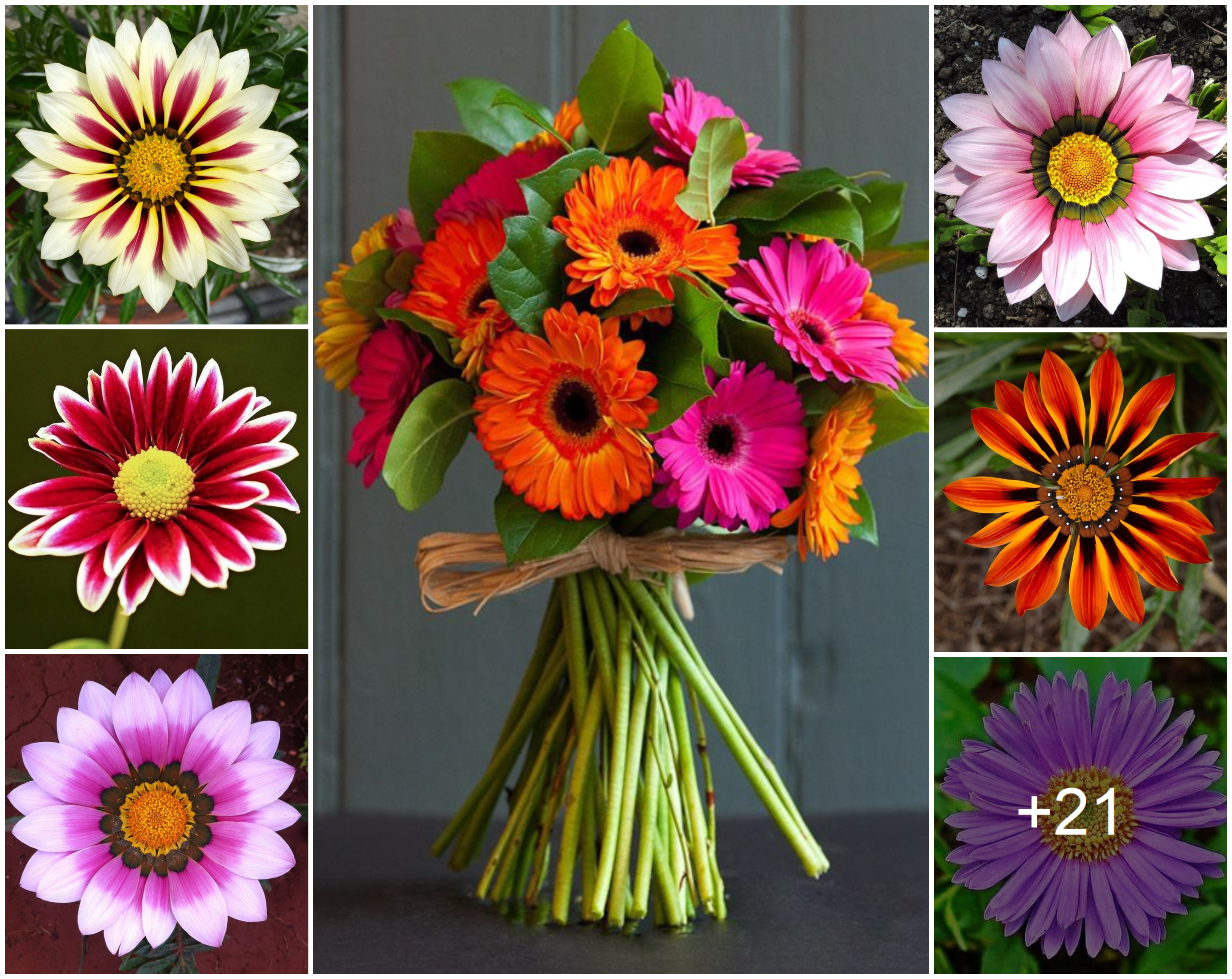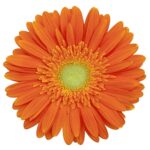6 types of daisies
There are many varieties of daisies, from the most famous variety with yellow centers and white flowers to fast-growing wildflowers. These are some of the different types you can add to your garden:
1. Shasta daisy (Leucanthemum x superbum):
The Shasta daisy is perhaps the most famous type of daisy. It has white petals surrounding a yellow center.
2. Common daisy (Bellis perennis):
Perhaps the most recognizable daisy, the common daisy (also known as the lawn daisy or English daisy) has a flat disk shape with a ring of petals around the center.
3. Barberton daisy (Gerbera jamesonii):
This daisy comes in shades of red, pink, orange and yellow and can have single or semi-double flowers.
4. Marguerite daisy (Argyranthemum frutescens):
Marguerite daisy comes in white, yellow and pink flowers.
5. Oxeye daisy (Leucanthemum vulgare):
These white flowers commonly grow as wild flowers in fields and meadows, and they can grow and spread easily in your garden.
6. Painted Daisy (Tanacetum coccineum):
These flowers have yellow centers surrounded by petals that can be red, yellow, pink, violet or white.
How to plant daisies from seed
When growing daisies from seed, the flowers will bloom the following year. Plant the popular Shasta daisy from seed by following these steps:
Sow daisy seeds in spring. Daisy seeds can be sown outdoors when the soil has reached 70 degrees Fahrenheit.
Plant the seeds in a sunny location. Daisy seeds need light to germinate and the flowers do best in full sun.
Sow daisies seeds freely. Cover the sown seeds with an eighth of an inch of soil so sunlight can still reach the seeds.
Plant the seeds in nutrient-rich, well-draining soil. Use a mixture of sand, peat moss and manure compost soil for your daisies.
Keep the soil moist. Water the soil to keep it moist. The seeds should germinate within 10 to 20 days.
How to plant daisies from root balls
If you want flowers the same year you plant your daisies, buy plants that are already grown and transplant them from a pot into your garden in early spring.
Plant daisies in nutrient-rich soil. If your soil needs more nutrients, apply an all-purpose fertilizer to help the daisies grow. You can also add a layer of compost to conserve moisture.
Make room for daisies in your garden. Dig a hole twice the size of the pot the daisy came in. Place the daisy in the hole so that the root ball is level with the surface of the soil.
Space the daisies one to two feet apart. Daisies grow quickly, so be sure to give the rootballs room to expand in your garden.
Water daisies at the base of the plant. Water the base of the plant at least once a week. Daisies do not grow well in moist soil, so make sure the soil is well drained before watering again.
How to care for daisies in your garden
These drought tolerant flowers are easy to care for. Follow these tips to keep your flowers strong from season to season:
1.Support your daisies with stakes.
Certain types of daisies that grow tall and can topple over in strong winds. Keep an eye on your plants and invest if necessary.
2.Deadhead the flowers to promote growth.
Daisies can bloom several times in one season. If you kill the flower heads as soon as they begin to fade, you will encourage new flowers to form as many as three times in a season. When the plant has finished flowering, cut the stems down to the leaves, and the plant will flower again the following year.
3.Propagate daisies by division.
Daisies will self-seed and multiply, meaning the bushes will grow larger year after year. A year or two after the first bloom, the plant may grow so large that its roots crowd each other, causing some parts of the plant to wither. At that point, dig up the entire bush and cut away the dead parts and the corresponding roots. Divide the remaining plant and its roots and plant the separated sections 10 to 12 inches apart. Share as often as needed. If you do this, you will have healthy daisies for years to come.
 Flower Love
Flower Love













